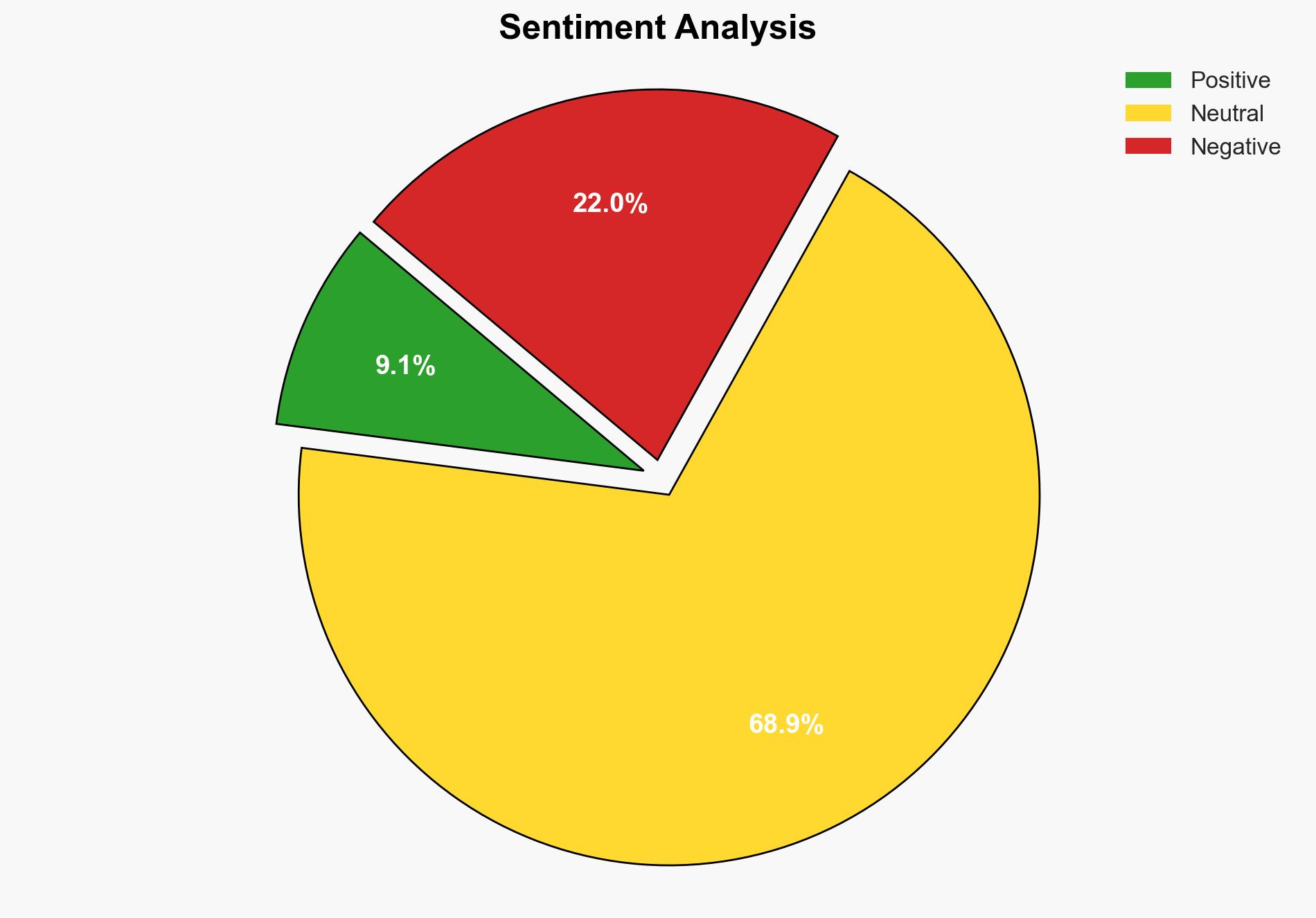Microsoft 365 accounts are under attack from new malware spoofing popular work apps – TechRadar
Published on: 2025-03-17
Intelligence Report: Microsoft 365 accounts are under attack from new malware spoofing popular work apps – TechRadar
1. BLUF (Bottom Line Up Front)
A new malware campaign is targeting Microsoft 365 accounts by spoofing popular work applications such as Adobe and DocuSign. Cybercriminals are impersonating these apps to steal login credentials and distribute malicious OAuth applications. The campaign is highly targeted, affecting organizations across Europe, including government, healthcare, supply chain, and retail sectors. Immediate action is recommended to mitigate the threat.
2. Detailed Analysis
The following structured analytic techniques have been applied for this analysis:
General Analysis
The malware campaign involves cybercriminals compromising Microsoft Office accounts and email addresses, particularly those belonging to charity organizations and small businesses. The attackers use social engineering techniques, such as spoofing Adobe Drive and DocuSign, to trick victims into granting permissions to malicious OAuth applications. These permissions allow attackers to access users’ profiles, email addresses, and other sensitive data. The campaign’s objective appears to be the theft of Microsoft login credentials and the distribution of malware through phishing pages.
3. Implications and Strategic Risks
The campaign poses significant risks to national security, regional stability, and economic interests. The targeting of critical sectors such as government and healthcare could lead to data breaches, operational disruptions, and loss of sensitive information. The use of social engineering tactics highlights the growing sophistication of cyber threats, necessitating enhanced cybersecurity measures across all sectors.
4. Recommendations and Outlook
Recommendations:
- Implement multi-factor authentication for all Microsoft 365 accounts to reduce the risk of unauthorized access.
- Conduct regular cybersecurity training for employees to recognize and report phishing attempts.
- Enhance monitoring and detection capabilities to identify and respond to suspicious activities promptly.
- Consider regulatory measures to strengthen the security of OAuth applications and prevent misuse.
Outlook:
In the best-case scenario, organizations will quickly adapt to the threat by implementing recommended security measures, thereby minimizing the impact of the campaign. In the worst-case scenario, widespread data breaches and operational disruptions could occur, leading to significant economic and reputational damage. The most likely outcome is a continued increase in targeted attacks, prompting ongoing adjustments in cybersecurity strategies.
5. Key Individuals and Entities
The report mentions Sead, a journalist based in Sarajevo, Bosnia and Herzegovina, who has reported on the issue. Additionally, the cybersecurity firm Proofpoint is highlighted for detailing the findings of the malware campaign.





